Click on image for full size
STScI and NASA
Inter-planetary Net!
News story originally written on August 3, 1998
According to Vint Cerf, inventor of the TCP/IP standard that the
Internet runs on, NASA researchers are working on a way to extend the Net
to Mars! Mr. Cerf said that, "There is now an effort underway to design
and build an interplanetary Internet."
The planned extension of the Net would make live broadcasts from NASA
missions to Mars easier, boosting their public visiblility. Researchers
are working on ways to overcome the obstacles in the path of the
signals. These "pings" take six hours to travel from Mars to Earth!
You might also be interested in:

"The weather on Mars: another cool and clear day. Low morning haze will give way to a mostly sunny afternoon with high clouds. The forecast for Venus: hot, overcast, sulfuric acid showers will continue.
...more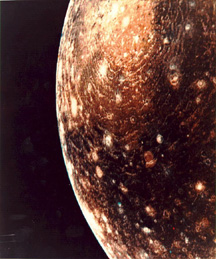
Early morning on November, 4 1996, NASA's Galileo spacecraft approached to within 686 miles of the stark, crater-smeared Jupiter's moon Callisto. This is the first time that Galileo has approached Callisto,
...more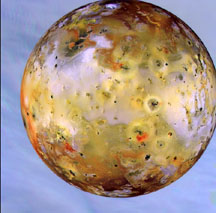
Scientists participating in NASA's Galileo mission have discovered that the during its Io fly-by, Galileo spacecraft may have flown through a dense, high-altitude ionosphere. This discovery suggests that
...more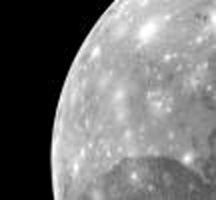
NASA's Galileo spacecraft has transmitted back crisp new images of Jupiter's moon Ganymede which show the moon's surface is daubed by comet and and asteroid impact marks. In addition to these findings,
...more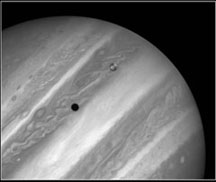
NASA'S Hubble Space Telescope has taken a rare joint portrait of Jupiter and its volcanically active moon Io, as the moon passes above the turbulent clouds of the giant gas planet. The conspicuous black
...more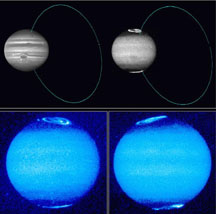
Scientists studying Jupiter's auroral regions are using images from Hubble's Wide Field and Planetary Camera 2 to map the planet's immense magnetic field and better understand the auroral phenomena. Aurorae
...more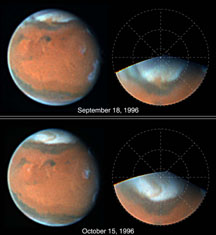
The Martian north polar is seen to be besieged by a Texas-sized dust storm. Two Hubble Space Telescope images, taken about a month apart shows this storm sitting at the edge of the north polar cap. It
...more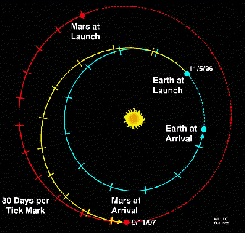
According to the most recent flight status report printed on January 24, 1997, the Mars Global Surveyor is in excellent condition and well on its way to the dusty red planet. The Mars Global Surveyor
...more














